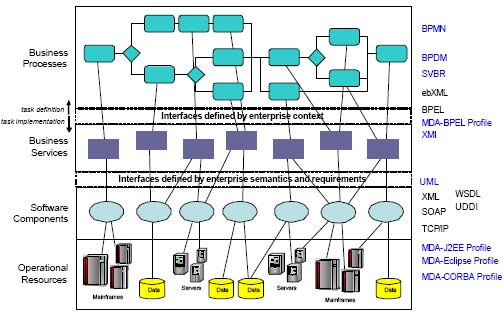I had a chance late last week to talk to Shawn Price (CEO) and Pat Morrissey (SVP Marketing) of Savvion about the news that they’re releasing this week. It’s always flattering to hear the CEO of a BPM vendor start a sentence with “Having read your blog…”, and there’s some interesting things that they’re announcing that are aligned with what I write about, including their “Show us your models” contest announced shortly after I wrote “Show me your process models“. Their call to see your process models is their new ProcessXChange, a forum to share process models, discuss best practices and other topics related to process improvement: more ambitious than what I was suggesting, which was just a library of process models, but at the same time, more restrictive since it is limited to process models developed in the Savvion Process Modeler. I applaud their efforts to start a collaborative community around process improvement, but a vendor-specific walled garden isn’t going to cut it in the long run.
Savvion is also launching a new version of their BusinessManager product this week that attempts to increase the range of BPM participants within an organization in an effort to speed the deployment of process automation: Shawn’s comment was that an organization must deploy its first application within 90 days in order to be successful at BPM, and allow for ongoing changes to processes two more times every 90 days. I found that comment tremendously interesting, considering that many of my more conservative customers spend three or four times as long to deploy their first application, and end up being not all that succesful because the business has changed during that time and there’s been too much over-customization to make the solution agile enough to adapt. I always push for a simpler application deployed sooner, but many customers are sold (usually by a large SI) on the notion of an all-singing, all-dancing “solution” that takes a year to develop and deploy, and ends up solving nothing, in the end.
A cornerstone of Savvion’s plan to push BPM out into the organization is their free, downloadable Process Modeler, on the premise that if everyone has a process modeling tool on their desktop, they’re more likely to participate in the process improvement efforts. They’ve also added simulation capabilities to allow an application to be previewed before deployment and improved their BAM capabilities. I’ve never done an in-depth on their product so I’m not in a position to say how much of an improvement that these things are over previous versions.
One recommendation that I made to them, which I’ve made to other vendors as well, is the addition of a zero-footprint AJAX-based process modeler, if you’re really serious about having this used throughout an organization. Many companies lock down the user desktops so that software can’t be installed, and applications requiring installation may take weeks of testing by a central IT group before they are approved for use on a desktop. Move this completely to the web with no download, and the usage rate will shoot up. One thing that I do like about their modeler is that it models in BPMN directly, whereas many other vendors are relying on third-party modeling products such as the Zynium add-on to Visio that exports to XPDL, then imports into their process modeler.
One last thing that we discussed is the role of BPM as an enabler for BPO by allowing for collaboration between an organization and their outsourcer: if the “home office” can model their processes and have those process be implemented elsewhere without re-translation of the models between tools, then use the same set of tools to monitor processes or collaborate on changes to the processes, business process outsourcing would get a lot less painful. Also, the addition of automation to the outsourced processes is becoming a necessity in places such as India where the wages are creeping up and the all-manual methods are becoming less cost effective. Savvion is busy making deals with a number of Indian BPO firms with exactly these ends in mind.

